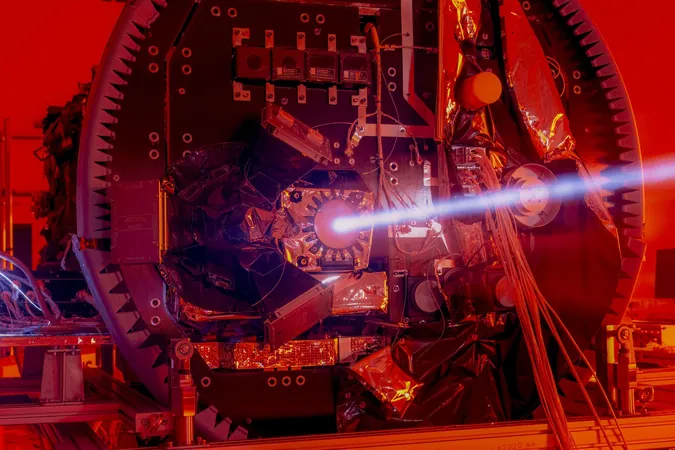
Proba-3: Revolutionizing Space Precision with Laser Technology!
2024-11-22
Author: John Tan
The European Space Agency (ESA) is set to launch a groundbreaking mission known as Proba-3 from India on December 4th, marking a significant leap in space exploration. This double-spacecraft formation flying mission will utilize cutting-edge positioning technologies, including a remarkable laser system designed to achieve unmatched precision in space, with accuracy down to a single millimeter!
In February, during extensive ground calibration tests conducted by ESA in collaboration with MDA and the Center Spatial de Liège in Belgium, an infrared test image was captured showing how the laser operates. This technology is crucial for the mission's ambitious goal: to create artificial solar eclipses on demand, allowing the Occulter spacecraft to cast a precisely controlled shadow on its partner, the Coronagraph spacecraft, for durations of up to six hours.
To maintain a minuscule shadow—measuring just 8 cm—in perfect alignment at a distance of approximately 150 meters, the two satellites will employ a sophisticated array of sensors. These include inter-satellite radio links, Global Navigation Satellite System receivers, and visual imaging systems that utilize LEDs. However, it's the state-of-the-art laser metrology system that will provide the ultimate positioning accuracy when the satellites are in close proximity.
Here's how it works: a laser beam will be emitted from the Occulter spacecraft, targeting a specially designed retroreflector on the Coronagraph. This reflector ensures that the beam returns to its origin with pinpoint precision. Additionally, Shadow Position Sensors installed around the coronagraph aperture will monitor the shadow's position, guaranteeing it stays perfectly aligned during the mission.
Proba-3 is a collaborative effort led by Spain's SENER, engaging over 29 companies across 14 countries. The spacecraft's design is attributed to Airbus Defense and Space in Spain, with satellite integration efforts handled by Redwire in Belgium. The formation flying subsystem will be managed by GMV in Spain, while the Coronagraph's primary instrument has been developed by the Center Spatial de Liège.
As excitement builds for its upcoming launch via the PSLV-XL rocket, provided by the Indian Space Research Organization (ISRO), Proba-3 is poised to redefine our understanding of precision in space measurement and unlock new possibilities in the scientific study of solar phenomena. Stay tuned for this historic launch that promises to propel us into a new era of space exploration!



 Brasil (PT)
Brasil (PT)
 Canada (EN)
Canada (EN)
 Chile (ES)
Chile (ES)
 España (ES)
España (ES)
 France (FR)
France (FR)
 Hong Kong (EN)
Hong Kong (EN)
 Italia (IT)
Italia (IT)
 日本 (JA)
日本 (JA)
 Magyarország (HU)
Magyarország (HU)
 Norge (NO)
Norge (NO)
 Polska (PL)
Polska (PL)
 Schweiz (DE)
Schweiz (DE)
 Singapore (EN)
Singapore (EN)
 Sverige (SV)
Sverige (SV)
 Suomi (FI)
Suomi (FI)
 Türkiye (TR)
Türkiye (TR)